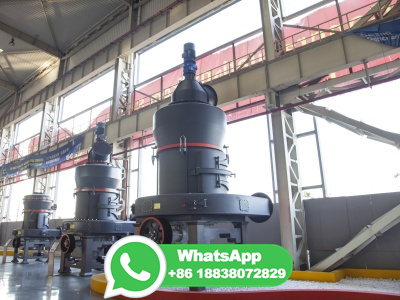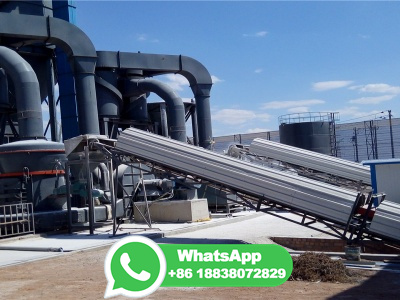
magnetic Separation pulleys are ideal magnetic products used as head pulleys in belt conveyors. These pulleys offer superior removal of ferrous contamination like nails, spikes, nuts, bolts, cans, and wire from material conveyor with maintenance free operation. Whatever your appliion is, a magnet is a low cost way to remove that unwanted ferrous metal from your waste stream. They require ...


Our magnetic separation and metal detection systems are vital components of most robust Hazard Critical Control Point (HACCP) plans. Metal contamination risks exist at most stages of production; from goods inwards to end product dispatch. Is your process protected? We can survey your process and recommend the best magnetic separator or metal detection product for the HACCP loion to ...


A magnetic separator filters and immediately removes metal contaminants from the product flow and later removes them. Magnetic separators. cause practically no product loss; are suitable for removal of regularly occurring and larger quantities of metal contamination. A metal detector only detects. If you want to remove the metal particle, the production line has to be stopped, or a rejection ...


At Industrial Magnetics, Inc. (IMI), we specialize in industrial strength magnetic separation equipment for the removal of ferrous and nonferrous metal contaminants from dry or liquid product flows and we are the first manufacturer to offer 52 MgOe rare earth material as a standard in many of our metal separation products. Our magnetic separators are used in industries such as food, chemical ...


Our major products are wet permanent drum magnetic separator, dry permanent drum magnetic separator, over band magnetic separator and suspended magnets. All these equipment can be designed and manufactured in accordance with the specific requirements of our customers. Any question regarding our products, please contact us without hesitation. Founded in 2002 51 100 People 96% .


Liquid Trap Magnets are engineered to remove ferrous contaminants from liquid and slurry lines. Efficiently remove tramp iron before maintenance and product contamination problems occur. The benefits of this magnetic separator can be experienced in most cases with no appreciable pressure drop or reduction in flow rates.


· The Low Intensity Magnetic Separators (LIMS) recover magnetic material from nonmagnetic matter and are part of Outotec's Planet Positive product offering. The separators use physical separation and don't require chemicals. They feature a modular design with several frames and process tank designs and use a common magnetic drum for ease of selection of the best machine for .


· A magnetic separator can vary greatly in size, configuration, and how they operate, depending on the industry and product in which they are intended for. Some types of magnetic separation equipment include grate magnets, pulley magnets, inline magnets, suspension magnets, selfcleaning magnets, liquid line magnets ...this list could go on and on and on.


· Separation by a Magnet. The technique of separation by a magnet depends upon the process of separating components belonging to mixtures by the use of a magnet. It is used to attract magnetic materials. The basic principle behind this technique is that it detaches nonmagnetic material apart from the magnetic ones. This technique is extensively in use for ferromagnetic minerals, that is .


Wet High Intensity Magnetic Separator (WHIMS) The WHIMS range includes 4, 16, 24 and 48 pole machines with either 68 or 120 millimetre separation matrix widths. WHIMS separators are suitable for appliions requiring higher magnetic field gradients to remove weakly magnetic particles from nonmagnetic concentrates. Nominal capacities range from 6 to 150 tonnes per hour. Typical appliions ...


Magnetic separation technology is one of the best methods for sorting recyclable materials. It uses the power of magnetic devices to sort ferrous products from nonmagnetic debris. Importance of magnetic separator . Magnetic Separator is the most trusted machine used to recover metal from the waste materials. It is known for the easy separation process to detach fine particles which have poor ...


· Magnetic separation is the process of separating magnetic materials from nonmagnetic materials using a magnetic system. After World War II, this process became popular in scrap yards to separate metal particles from vehicles; however, the process is more sophistied than that. In fact, one of the major benefits of magnetic separation is that the magnets can separate microsized particles .


Magnetic cell separation is now recognized as a routine method for the separation of various cell populations in suspension depending on their surface antigens. This method employs magnetic particles (or beads) exhibiting diameters between and 50 µm conjugated to highly specific primary or secondary antibodies. Once bound to the intended target, beads are subjected to magnetic forces ...


· Magnetic Separation. This method is used in those cases where either ore or the impurities are of magnetic in nature. In this method, the powdered impure ore in the form of thin layer is allowed to fall on a rubber belt which moves horizontally over two rollers, one of which has electromagnetic attached it.


· Processing plants could capitalize on magnetic separation technologies to reduce their environmental footprint while more efficiently recovering a range of valuable minerals. Although the technology has fallen out of favour with some people, there have been advancements in the field of magnetic sorting in the last decade. Rare earth elements have improved the strength of magnetic .


· The separation of fine sulfides becomes increasingly difficult at fine particle sizes. Potential fine size separation methods are froth flotation and magnetic separation. The mineral sulfides, with the exception of pyrrhotite, are either weakly paramagnetic ( chalcopyrite) or diamagnetic ( molybdenite). Those which are paramagnetic can only be separated using highgradient magnetic ...


· Magnetic beads range from a few nanometers to a few micrometers in size. The behavior of magnetic beads is dependent on bead size. Magnetic nanoparticles are often irregularly shaped, and have slower magnetic separation kinetics due to a lack of chain formation, and in some cases have been found to enter into the cell through the cell membrane.


· Magnetic separation of nucleic acids has several advantages compared to other techniques used for the same purpose. Nucleic acids can be isolated directly from crude sample materials such as blood, tissue homogenates, cultivation media, water, etc. The particles are used in batch processes where there are hardly any restrictions with respect to the sample volumes. Due to .


A specialist in field of magnetic separation. Our magnetic separators are featured with a fabriion of quality, attractive design, extensity of appliion use, high effectiveness of tramp metal removal and acceptable price. We will help you when solving a problem how to remove the unwelcome adulterants coming from products and contribute to the preservation of machinery. More about our ...


Watch the video on how to use magnets for cell separation. Magnetic stands and racks for Dynabeads products Magnet Optimal working volume Description DynaMag2. 10 µL–2,000 µL (This magnet replaces the Dynal MPCS magnet) Holds 16 (–2 mL) microfuge tubes; 8 positions on each side of the rack ; Top rack can be quickly removed from the magnet in the base, ready for vortexing, rotation ...

إذا كنت مهتما في شركتنا أو المنتجات، ترحيب لزيارة شركتنا أو المكاتب المحلية. يمكنك أيضا الحصول على الاتصال معنا من خلال الاستشارات عبر الإنترنت، وتقديم الطلب الجدول، والبريد الإلكتروني والهواتف. موظفينا يجب بكل إخلاص تقديم معلومات المنتج، تطبيق المعرفة و خدمة جيدة بالنسبة لك.
Copyright © .CNمحطم All rights reserved.Sitemap